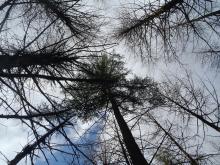Metabarcoding analysis of Phytophthora diversity in spore traps and implications for disease forecasting in the P. ramorum management zone

Surveillance and monitoring of airborne pathogens is a key tool in the management of healthy forests and controlling disease outbreaks. A Scottish Forestry-funded project was carried out in autumn 2019 to validate different spore-trapping techniques for monitoring airborne P. ramorum inoculum using a species-specific qPCR assay. This project aimed to add further value to the Scottish Forestry project by investigating the suitability of DNA metabarcoding for screening spore trap samples for P. ramorum and other Phytophthora species, seeking early data for aerially dispersed Phytophthora species that may become problematic in UK forests. The study highlighted the value of both monitoring P. ramorum dispersal and detecting other Phytophthora species, to predict and understand changes in disease severity in UK tree host species. Recommendations included that the use of both rain and wind-borne inoculum capture methods might be advantageous due to the variety of weather conditions under which inoculum can disperse. Lineage testing in Southwest Scotland should be carried out to look at the prevalence of lineage EU1 in the EU2 area and to monitor for presence of North American lineages. Development of a new DNA barcode more specific to Phytophthora would be beneficial.
Image of Scottish larch trees killed by P. ramorum provided by Sarah Green (Forest Research)
